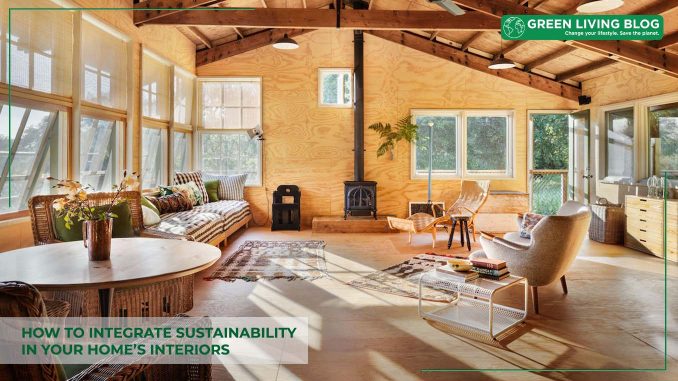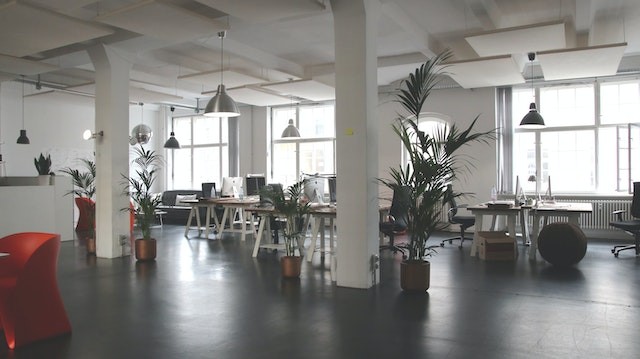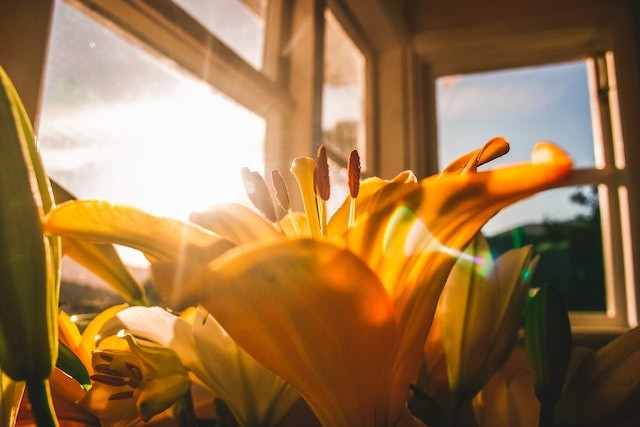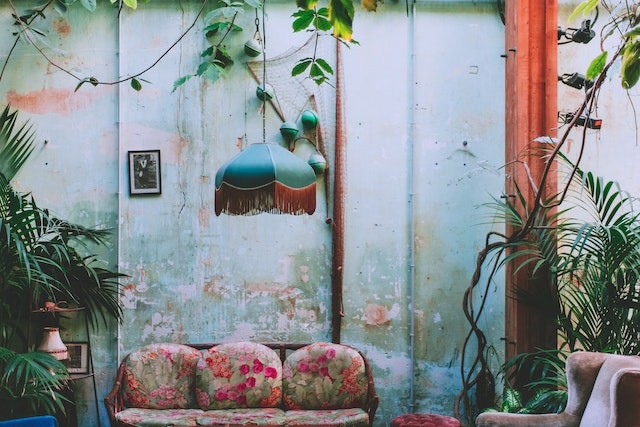
Sustainability has become one of the hottest topics amid rising climate change awareness. Many people have even embraced green living behaviours to lower their carbon footprint and protect the planet.
Integrating eco-friendliness in your home’s interiors is an excellent place to start if you’re interested in green living. Eco-friendly interior design better aligns with sustainable values and paves the way to fewer greenhouse gases. Homebuyers are also more eager to purchase homes that lean green.
According to the National Association of Home Builders, 57% of buyers are willing to pay over $5,000 for an energy-efficient home if they can save $1,000 in utility costs annually. From lower energy to improved indoor air quality, there are many reasons why homeowners should consider eco-friendly interior design trends for their next home renovation or new construction.
Here are five sustainable home design upgrades they can make.
1. Green Spaces

It’s almost impossible to peruse social media without stumbling on the “plant parent” hashtag. Since the pandemic, more people have embraced greenery in their homes. However, an eco-friendly home is more than simply having a residential botanical garden to care for — plants are known to be good for your well-being and provide cleaner indoor air.
Including plants in your eco-friendly interior design presents opportunities for creativity, such as using different types of foliage, wall art, and displays. Place an assortment of potted plants in various colors in the living room, situate a vine plant off the ledge of a china cabinet or windowsill or create a vertical design by hanging plants from the ceiling.
2. Sustainable Flooring

Sustainable building materials and interior finishes are having a moment in residential construction. Nowadays, homeowners have options when it comes to picking out eco-friendly flooring materials.
Many flooring products meet today’s green standards, using materials and manufacturing methods that cause little to no harm to the environment. For example, homeowners might look for floors made with bamboo — a renewable material that grows in abundance and is several times more durable than steel. Look for products with the Forest Stewardship Council certification label when browsing eco-friendly products for your home design.
3. Energy Efficiency

It’ll be hard not to feel sticker shock when you see your energy bills rise this winter. The U.S. Energy Information Administration estimates homeowners will spend 28% more on natural gas this year than last. Meanwhile, heating oil is projected to rise by 27%.
One of the most popular eco-friendly interior design trends is optimizing your house for energy efficiency — this includes swapping out appliances for newer models, programming your thermostat, and replacing incandescent light bulbs with LEDs (light-emitting diodes). Even minor changes — such as using smart plugs or low-flow faucets — can significantly affect your utility bills and household energy consumption.
4. Natural Light
 Enhancing your home’s natural light benefits the environment and your well-being, whether you add more windows or take down heavy drapes. If you’re building your home, include extra windows on the side that gets the most sunlight.
Enhancing your home’s natural light benefits the environment and your well-being, whether you add more windows or take down heavy drapes. If you’re building your home, include extra windows on the side that gets the most sunlight.
Natural light prevents you from using more energy by avoiding turning the lights on and provides free heating during cold winters. Of course, natural light’s health benefits are a bonus — it helps stabilize your circadian rhythm and improves vitamin D levels. Another study found just 2.5 hours of daily natural light could help reduce depression.
5. Reclaimed Styling

Reusing, recycling, and reclaiming are essential mantras of environmentalism — and there are plenty of ways to incorporate each trait into your eco-friendly interior design. Reclaimed and reusable goods deliver an opportunity for imagination as you decorate your house.
For instance, you can reclaim and reuse your grandfather’s desk as a unique vanity in your bathroom. You might also reuse a kitchen sink in your laundry room or an outdoor wash station for fruits and vegetables from your garden.
Giving old furniture and fixtures a second life could result in unique fixtures for your home. You’ll also help avoid creating unnecessary landfill waste by extending each piece’s life span.
Spruce Up Your Home With Eco-Friendly Interior Design Trends
When you integrate these popular eco-friendly interior design trends into your home, you’ll see increased savings on your energy bills and transform your home into a safer, more comfortable place to live. Hop on today’s sustainable design train and choose to make your home greener.
![]()
Author Profile
- Online Media & PR Strategist
- Blogger and Educator by Passion | Senior Online Media & PR Strategist at ClickDo Ltd. | Fascinated to Write Lifestyle Blogs in News & Education I have completed a journalism summer course at the London School of Journalism and manage various blogs.
Latest entries
 LeisureApril 16, 202510 Best Green UK Hotels for Eco-Tourists
LeisureApril 16, 202510 Best Green UK Hotels for Eco-Tourists Best practicesApril 14, 20258 Best Ways to Reduce Your Carbon Footprint
Best practicesApril 14, 20258 Best Ways to Reduce Your Carbon Footprint Green Expert GuidesMarch 28, 2025Lisbon Living: Where Sustainable Charm Meets Urban Energy
Green Expert GuidesMarch 28, 2025Lisbon Living: Where Sustainable Charm Meets Urban Energy EnvironmentJanuary 21, 2025Buying Eco-Friendly Homes: 6 Eco Questions to Ask Your Real Estate Agent
EnvironmentJanuary 21, 2025Buying Eco-Friendly Homes: 6 Eco Questions to Ask Your Real Estate Agent






Leave a Reply
You must be logged in to post a comment.